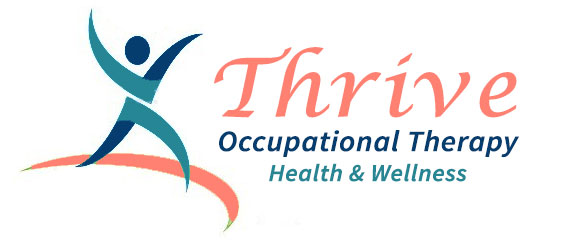Hey everyone! It’s Maddie again, Thrive’s occupational therapy capstone student. I hope you enjoyed my last post about grounding techniques. Today, I want to dive deeper into the realm of mindfulness and relaxation by discussing something that might be unfamiliar to some of you: the vagus nerve.
If you’re like many people, you’ve probably experienced feelings of anxiety and uncertainty at some point. Whether it’s due to school pressure, career worries, family dynamics, or life’s unexpected twists and turns, it can be overwhelming. This is why I felt motivated to write this blog post—a little resource to help you regain some control over your nervous system and find that inner peace we all crave.
So, what exactly is the vagus nerve? It’s a crucial part of our parasympathetic nervous system, often referred to as the “rest and digest” system. When stimulated, it can help calm the mind and body, reducing stress and anxiety. Here are a few simple yet effective strategies to help you stimulate your vagus nerve:
- Deep Breathing: Focus on deep, diaphragmatic breathing. Inhale deeply through your nose for a count of four, hold for four, then exhale through your mouth for a count of six. Repeat this several times to help activate your vagus nerve and promote relaxation.
- Vocalization: Engaging your voice can be surprisingly effective! Try humming, singing, or even chanting. These activities can stimulate the vagus nerve and help soothe your nervous system.
- Cold Exposure: Splashing cold water on your face or taking a cold shower can provide a shock to your system that helps activate the vagus nerve. Just a few seconds can make a noticeable difference!
- Meditation and Mindfulness: Practicing mindfulness meditation can help connect you with your body and calm the mind. Take a moment to focus on your breath or observe your thoughts without judgment.
- Yoga and Physical Movement: Gentle movements like yoga or tai chi can help regulate your body and activate the vagus nerve. Incorporating stretches and mindful movements can promote a sense of calm and well-being.
Remember, you are not alone in your experiences, and there are tools available to help navigate these difficult times. As you explore these vagus nerve stimulation techniques, I hope they provide you with some relief and a sense of control over your stress.
As always, I’m here to share insights and strategies that can help on your journey to wellness. Let’s embrace these practices together and take steps toward enhancing our well-being.
Until next time, take care!
— Maddie
References:
Cleveland Clinic. (2022, March 10). 5 ways to stimulate your vagus nerve. https://health.clevelandclinic.org/vagus-nerve-stimulation
Hauser, R. (n.d.). How you can repair your vagus nerves. Caring Medical Florida. https://caringmedical.com/can-repair-vagus-nerves/
Jakubiec, C. (2024, July 8). 10 ways to stimulate your vagus nerve (+ why it’s important). Anchored In Health. https://drcindyjakubiec.com/10-ways-to-stimulate-your-vagus-nerve-why-its-important/
Paturel, A. (2024, March 21). Bolster your brain by stimulating the vagus nerve. Cedars Sinai. https://www.cedars-sinai.org/blog/stimulating-the-vagus-nerve.html#:~:text=Take%20a%20breath.,of%20your%20surroundings%20and%20breathe.
Schwartz, A. (n.d.). The vagus nerve and eye movements: Tools for trauma recovery. https://drarielleschwartz.com/the-vagus-nerve-and-eye-movements-tools-for-trauma-recovery-dr-arielle-schwartz/#:~:text=The%20vagus%20nerve%20and%20eye%20movements%20are%20interconnected.,far%2Doff%20in%20the%20distance.
Schwartz, A. (n.d.). Vagus nerve yoga. https://drarielleschwartz.com/vagus-nerve-yoga-dr-arielle-schwartz/#
Somatopia. (2023, August 27). Reset your nervous system: Somatic tools for vagal tone. https://www.somatopia.com/blog/reset-your-nervous-system-somatic-tools-for-vagal-tone#:~:text=Various%20somatic%20practices%20naturally%20strengthen,vagal%20control%20of%20the%20heart.
